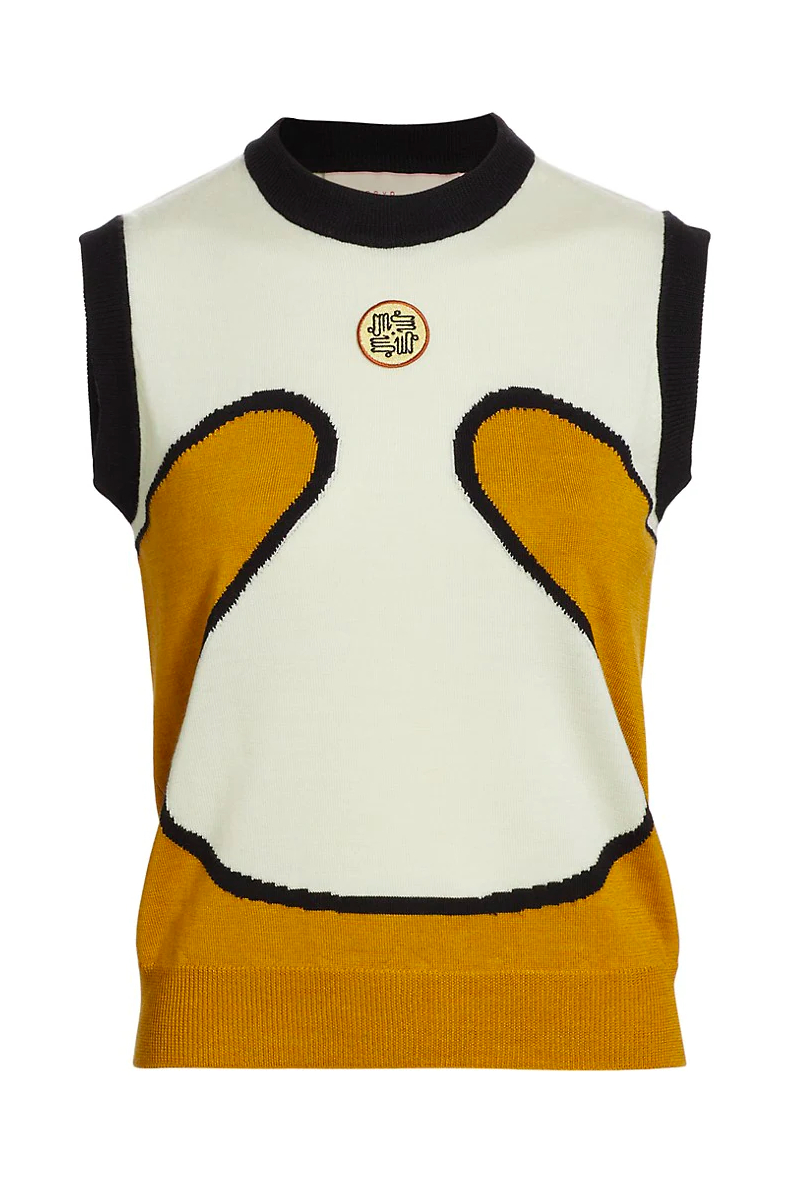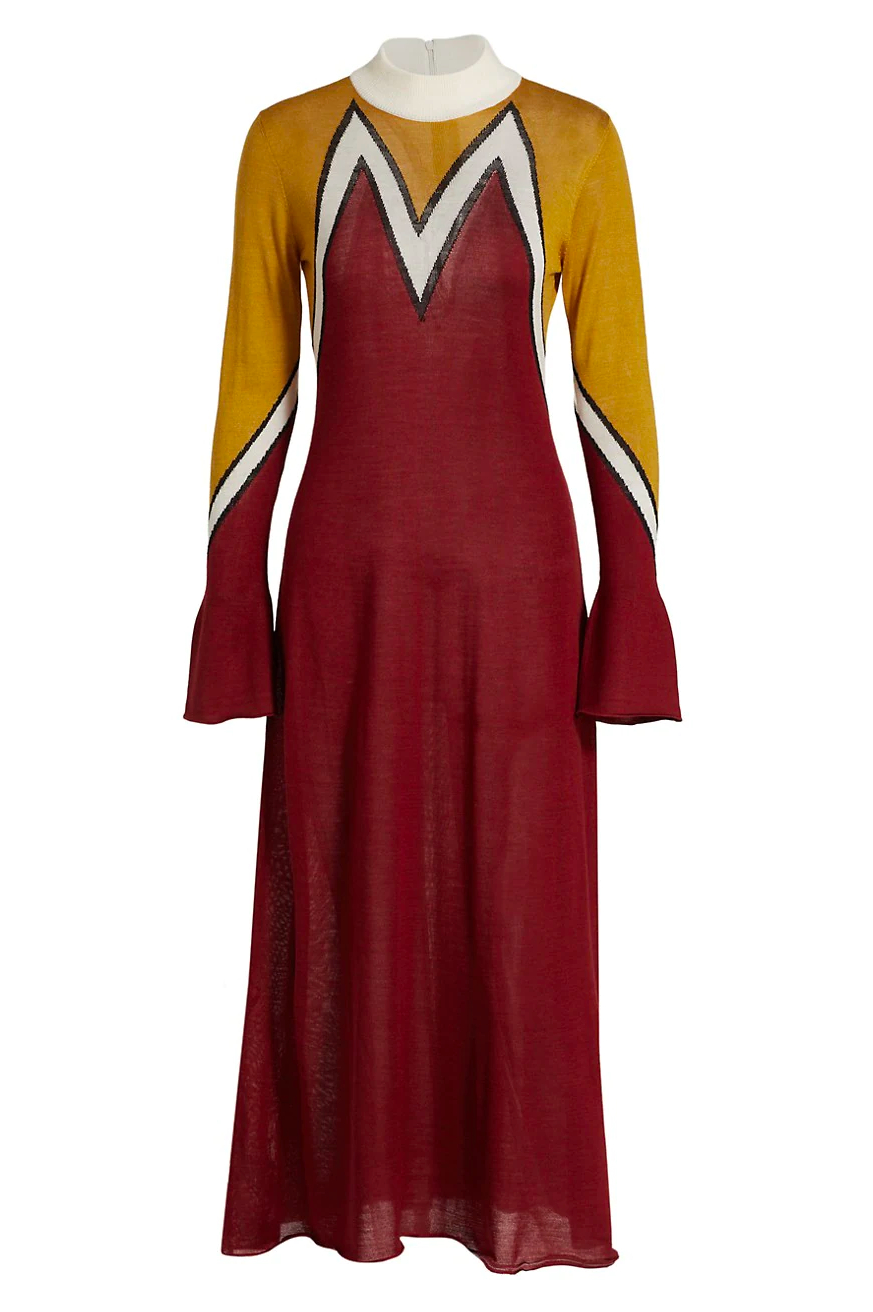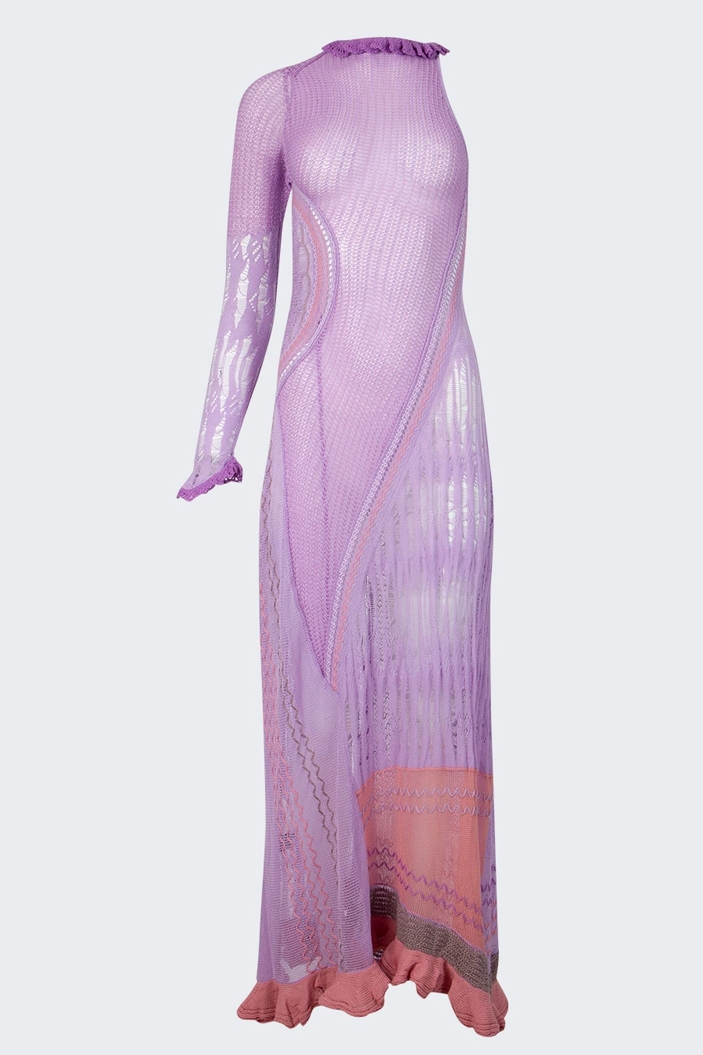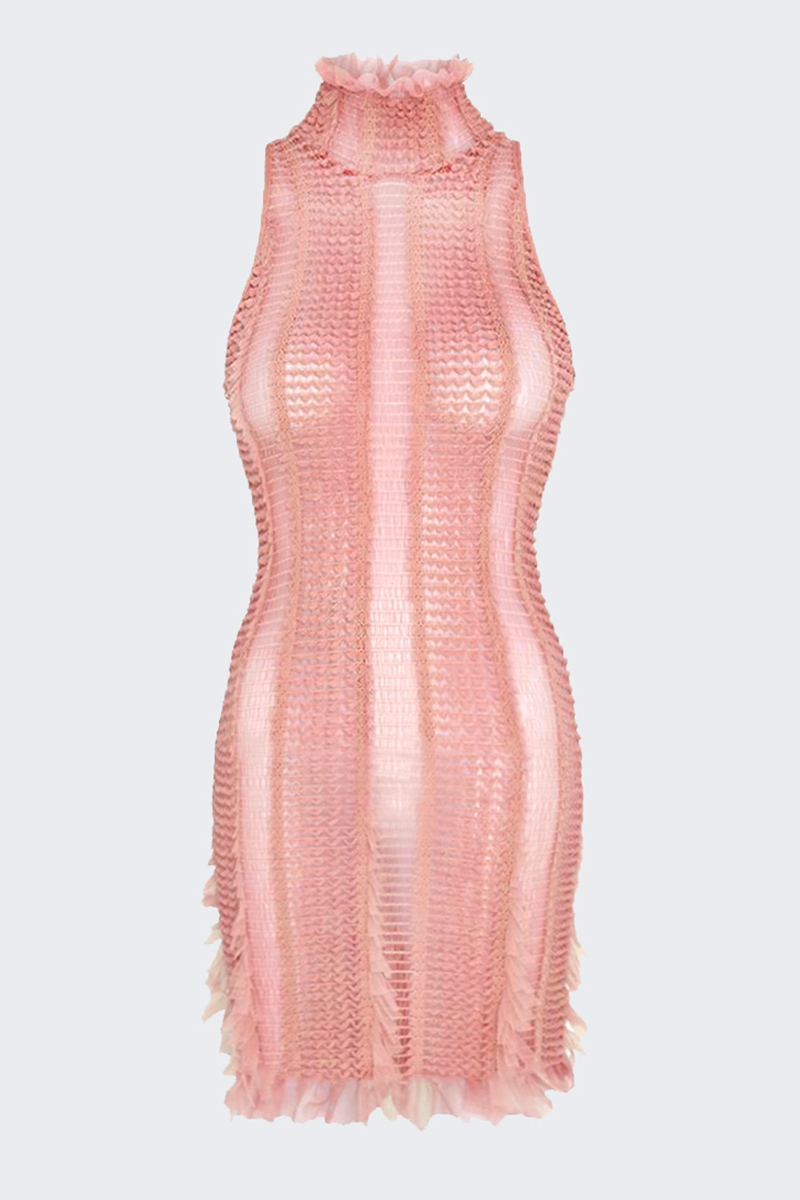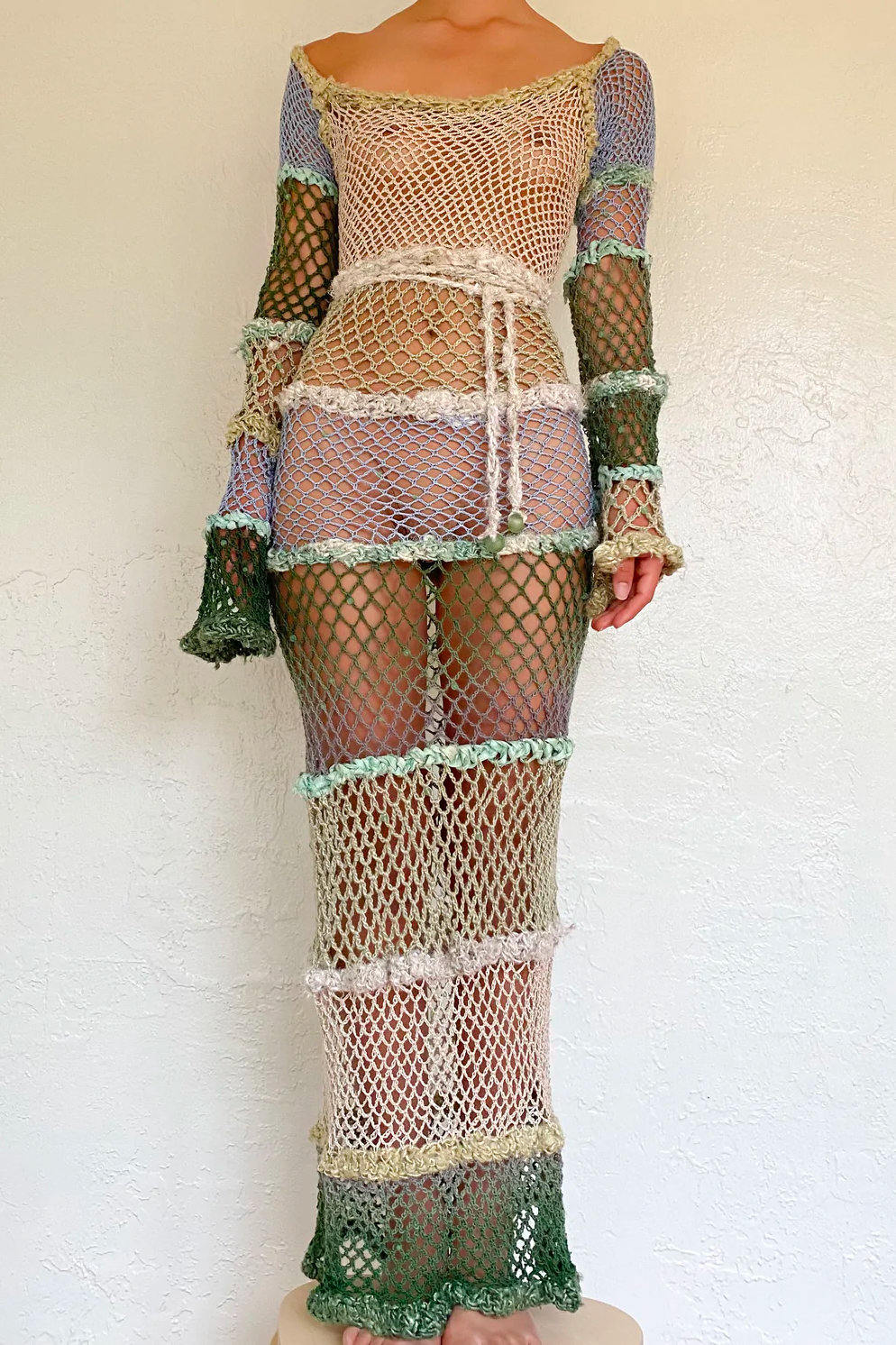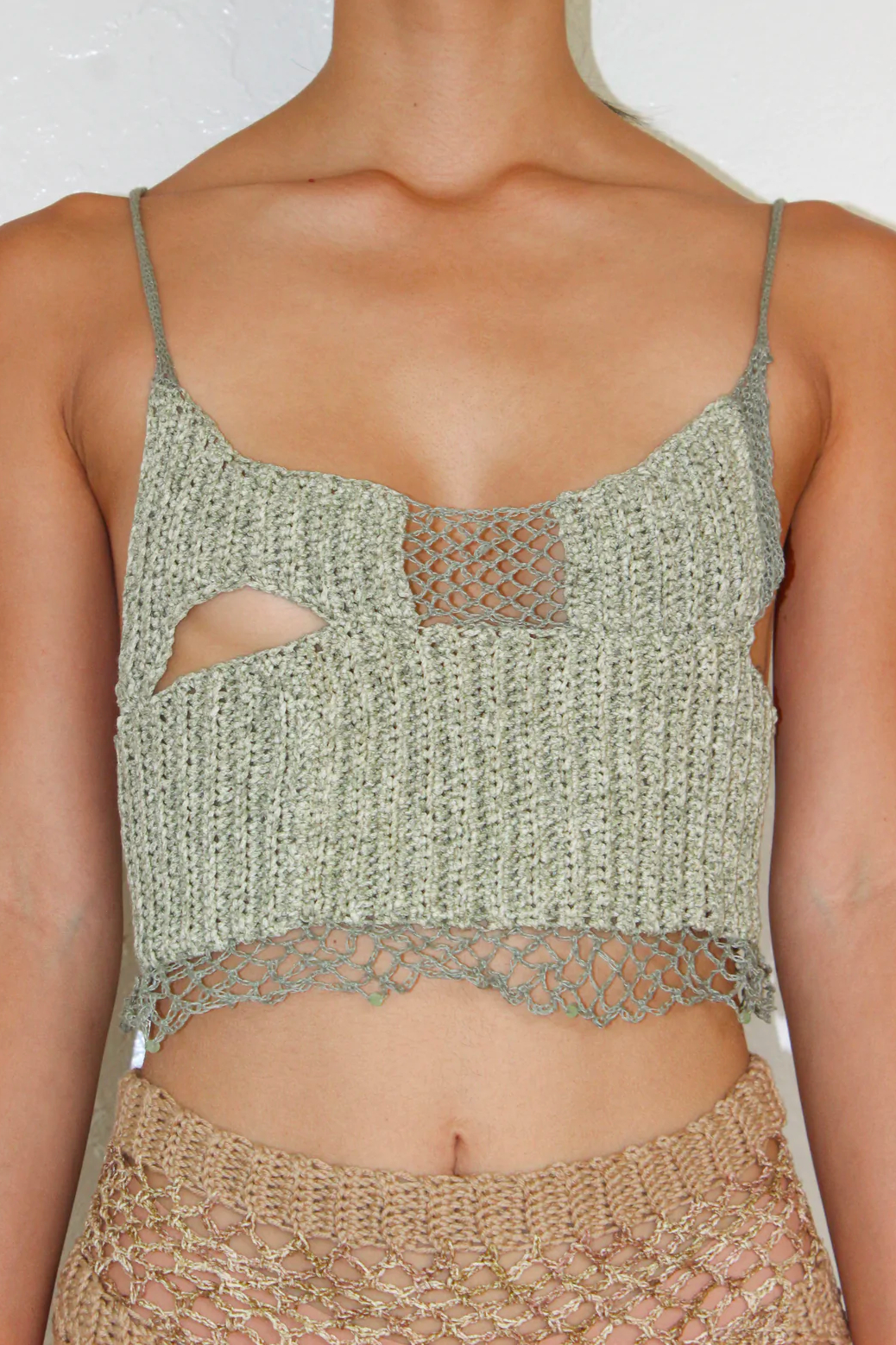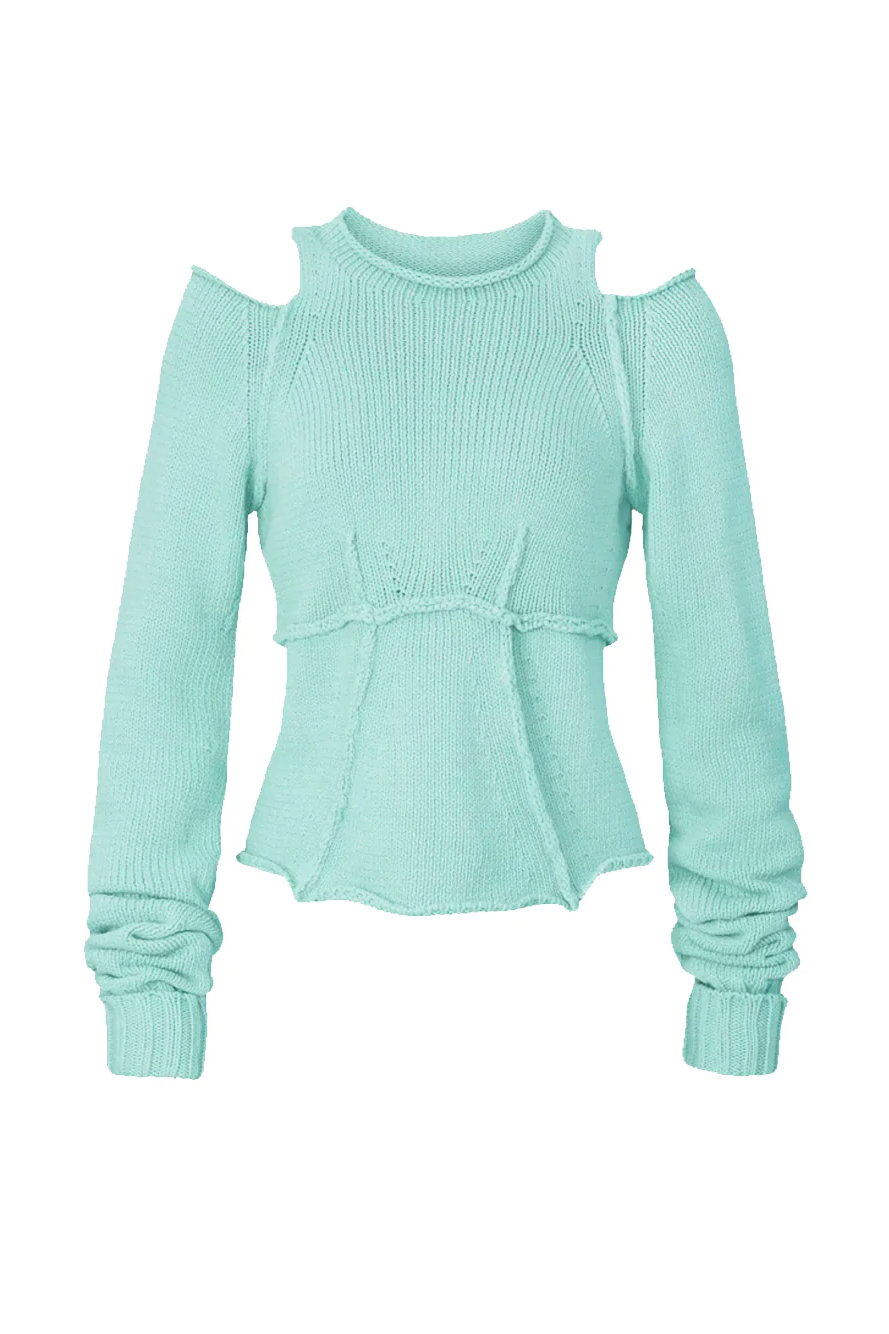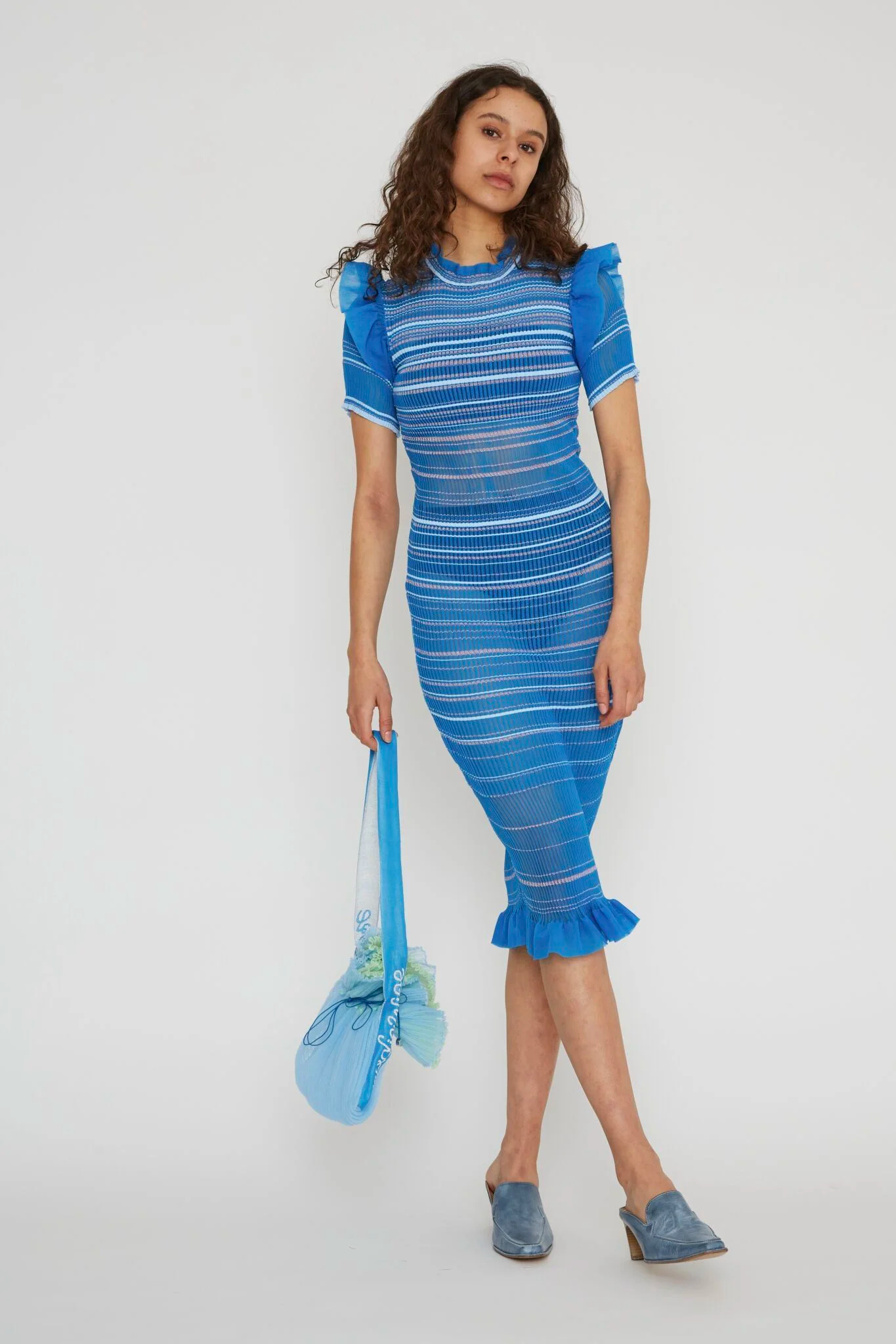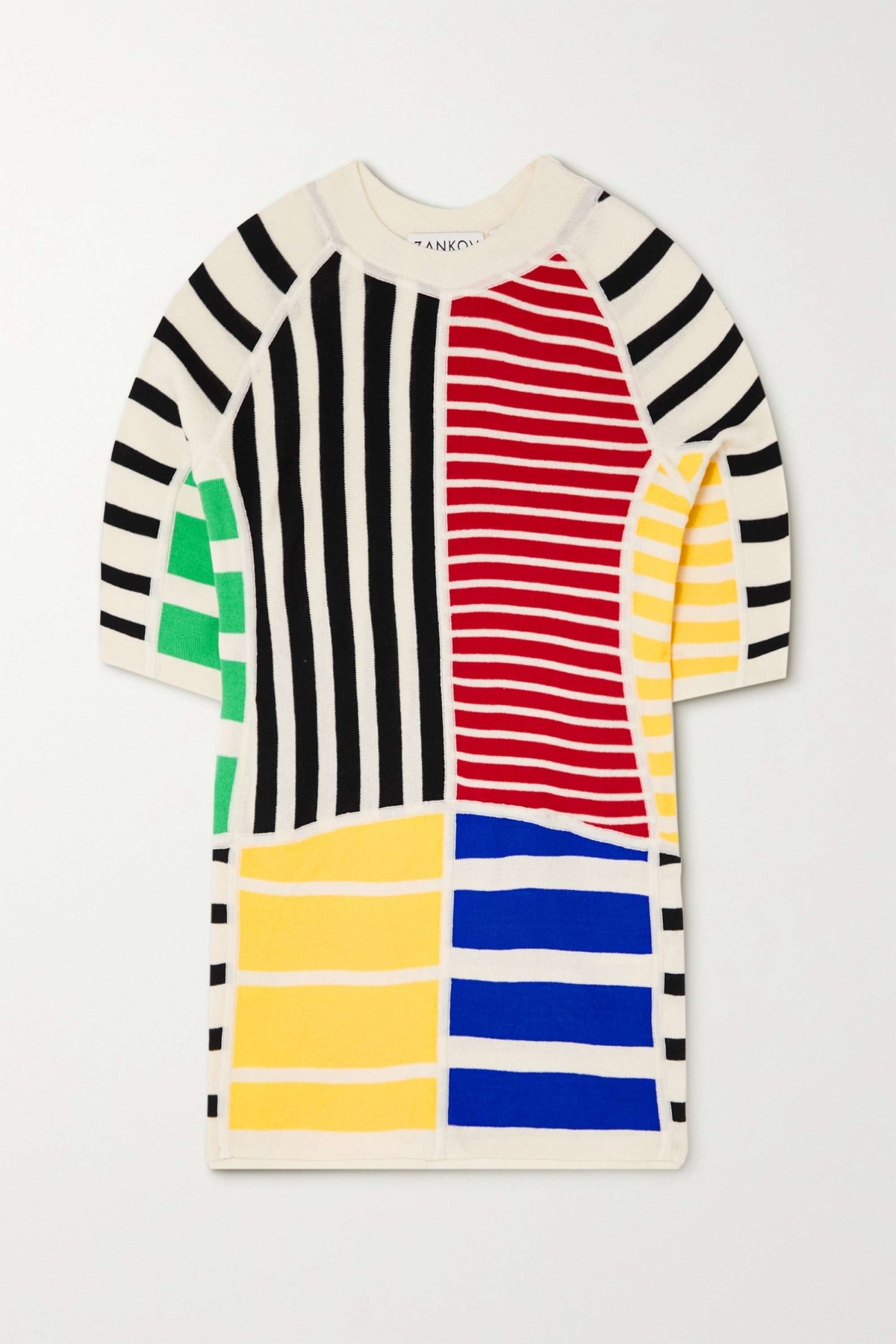The 7 Best New Knitwear Brands for Sweater Weather
Meet the next generation of knitwear designers.
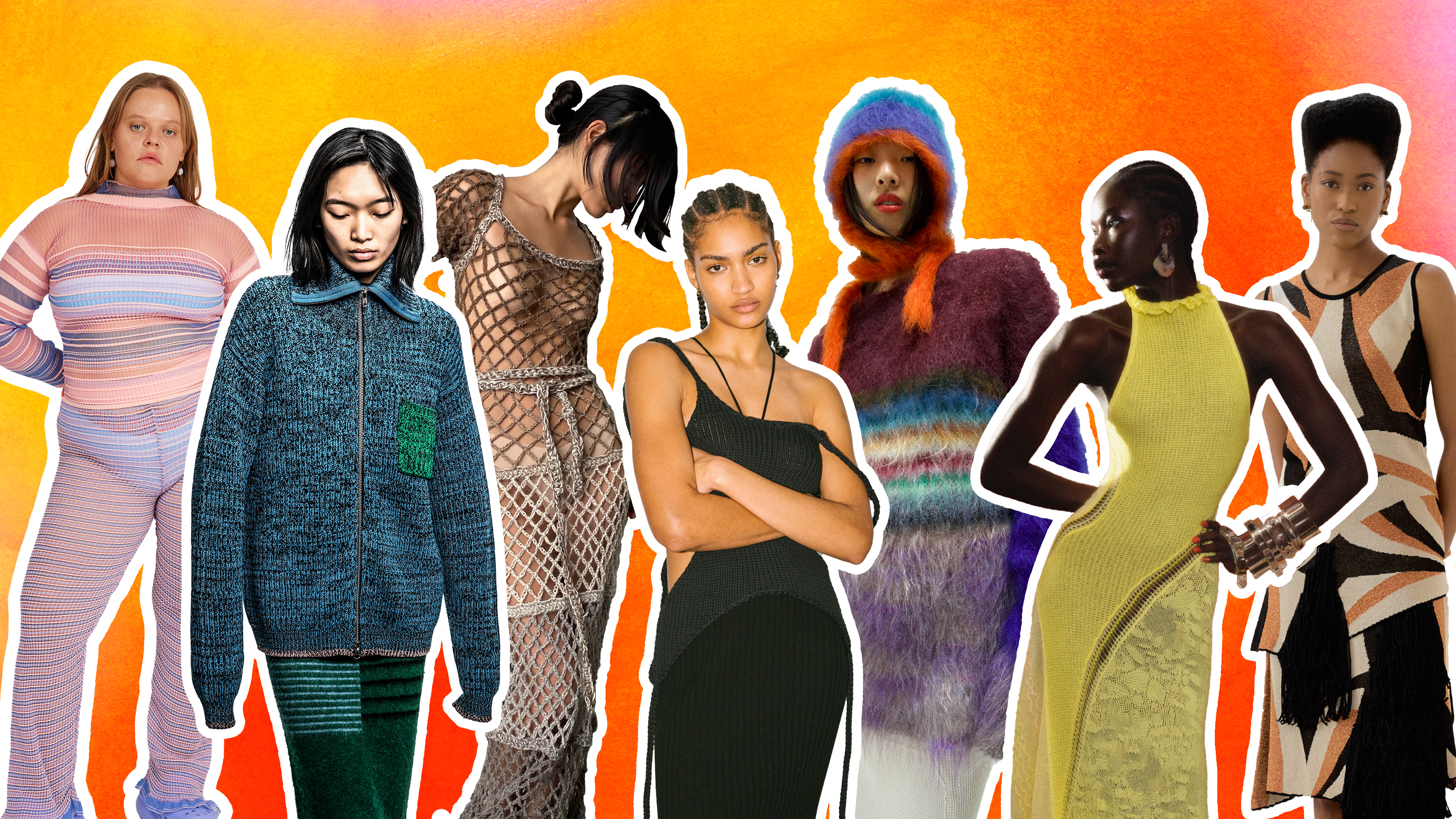

When you think of top-quality knitwear, the legacy names likely first come to mind—from Loro Piana to Brunello Cucinelli. Perhaps even The Row, with its oversized blanket sweaters and shrouding turtlenecks, is high on your list. And for a good reason: They're reliable classics. When you turn to a Missoni or Marni, you know you're getting pristine craftsmanship and will have a great sweater to add to your collection. But the next generation of knitwear designers has arrived—and they don't necessarily play by the old rules.
The best new knitwear brands are recontextualizing the industry niche, pushing it into a more well-rounded and, in some cases, unconventional direction. They aren't just making expertly-crafted and refined knits (of course, they do that, too), but they're ensuring ethical and sustainable practices are paramount and that the industry hears what they have to say.
Ahead, meet seven leading members of knitwear's up-and-coming crowd and find out how they're disrupting the sweater scene to make it reflective of the future they want to see.
Nong Rak
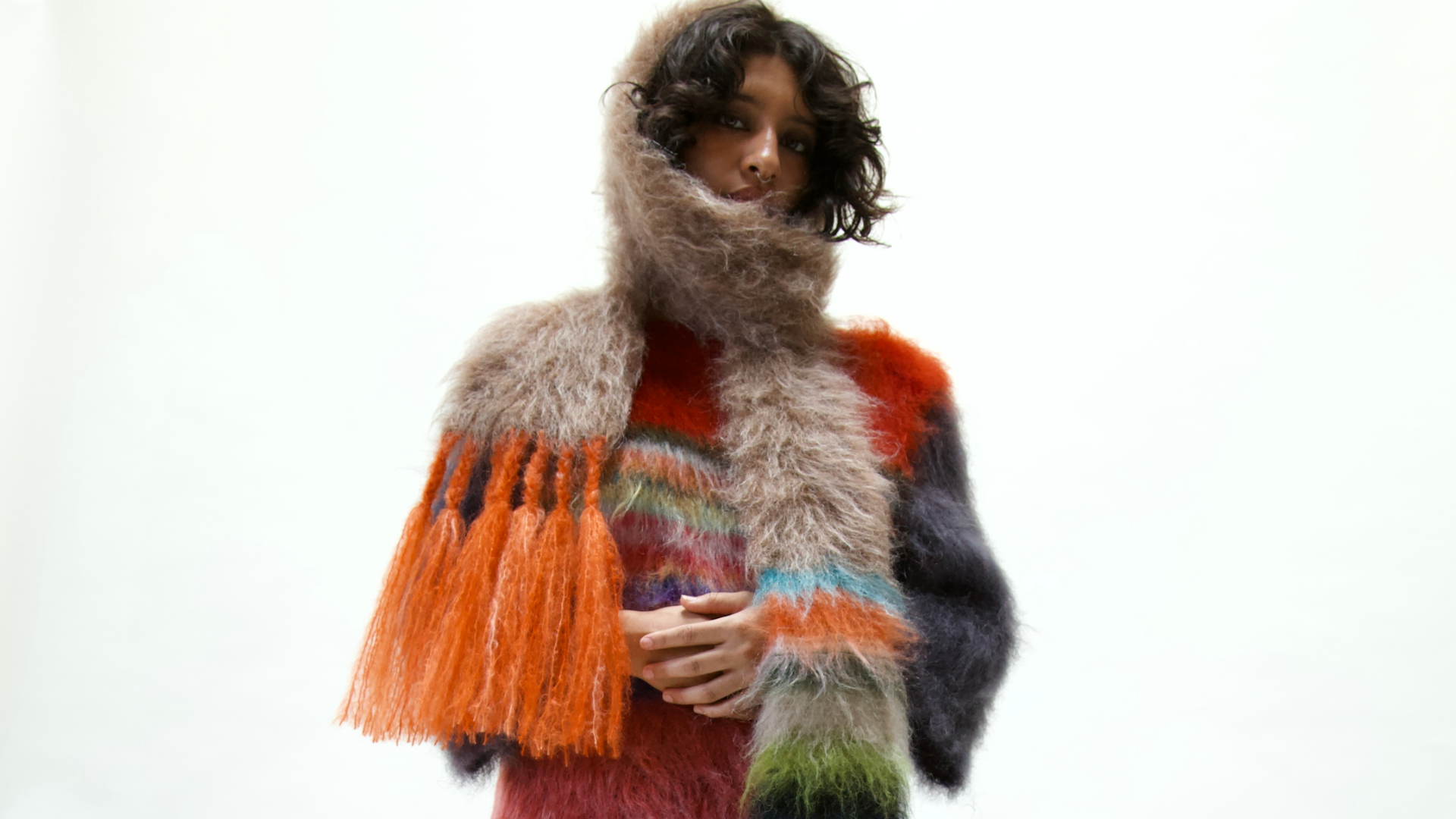
Cherry and Home Phuangfueang know the past couple of years haven't been easy. The grief, trauma, and constant upheaval, those 'unprecedented times' and 'new normals'—the Thai-American design duo is here to provide a reprieve from all that strife. "Clothing can be really emotional," Cherry tells Maire Claire. "So an important aspect of our brand Nong Rak has been to highlight the tactile nature of wearables and how therapeutic a sensory connection can be in our overly digitized and industrialized landscape."
The Phuangfueangs' work is sentimental and reassuring—like a hug from your mom, assuaging your worries and letting you know everything will be alright. And the pieces produced by the married couple (Nong Rak is Thai for ‘young love’—How cute, right?) do feel like a salve for your soul. Fuzzy wool with a cotton candy-like texture; cocooning jumpers in colorful stripes, cozy scarves, and bonnets that make you long to be swaddled like a baby.
“Much of it,” Cherry explains, “is letting the materials tell the story first with details, like their colors and textures, paying homage to the animals the fibers are trimmed from, the sincerity of the design, etc., and how these can ultimately influence feelings in the wearer.” This thoughtful approach is best observed in the 2018-launched label’s mohair pieces, a combination of deadstock yarn and new wool spun from Angora goats. You perhaps saw the brand’s lively mohair pieces—think textured balaclavas, kinetic sweater dresses, and floppy berets—in a recent Spring 2022 collaboration with Heaven by Marc Jacobs, which the internet gobbled up like candy.
“We spend a lot of our time sourcing the best quality modern mohair yarns from small, U.S. farms with the well-being of the animals at the top of our priorities. We want to make sure our pieces are made from well-loved animals’ wool, and we hope that can be felt in the caressing qualities of our work,” says Cherry. “The process is very long,” chimes in Home, “and takes a lot of muscle since the garments have to be very carefully hand-teased and brushed,” explains the Bangkok-born designer, who does all the brand’s post-knitting production.
Despite having developed a recognizable brand code (a rare feat worth celebrating), don’t expect mohair wool to be all you see from Nong Rak. “We’re evolving with each step,” says Home, and spontaneity remains paramount for the couple. “The spontaneous, creative process of Nong Rak is a driving force and one of the main reasons why we’re so focused on hand-craft and sentimentality in our work,” describes Cherry. “And through experimentation, we slowly find directions that are most meaningful to us.”
Lukhanyo Mdingi

"There's a certain kind of honesty and sincerity with what we do, and I think it comes down to not just the craft, but the human hands behind the craft," designer Lukhanyo Mdingi explains, his tone as gentle as his words. A joint winner of the 2021 LVMH Karl Lagerfeld Prize, the Cape Town-based designer has become a prominent figure in the knitwear scene for reminding consumers of the artisans behind his work. As opposed to a perfectly precise sweater made by a machine, Mdingi wants you to know his clothing is made, with love, by someone who has a deep connection to the work.
"The provenance of craft and textiles is really important to us," explains the 2021 LVMH Prize nominee, who pulls significant influence from South Africa's expansive legacy in Merino wool and Angora goat farming. "More than anything else, I wanted to see how I can bring that strong history within my culture to the development of our clothes."
And given that luxury fashion is known to be exclusive, bordering on an impersonal niche of the industry, Mdingi's humanity-driven approach feels like a subversion. "I believe it's quite rare to be aligned with incredible artisans that focus on the spirit of craft because it's part of their lineage. To have that reflected in our brand is incredibly important because we want that sentiment to be felt with the essence of the textile. It's bringing in the sense of human ingenuity and sensibility within contemporary design," he details.
The designer emphasizes that while his South African heritage plays a prominent role in his work and a bulk of his clothing is handcrafted on the country's eastern and western capes, the label is not relegated to that one corner of the world. "Our brand is global; We don't pertain to one space of manufacturing," he says, explaining how he also partners with Italian manufacturers for pieces that require more industrial production.
"With these partnerships, our brand can have this hybrid that's not only quite refined but also has a sincere and honest spirit within it, which comes down to the inherent craft element of knitwear," Mdingi details. "It's that collaborative spirit I want within our brand DNA and in pieces themselves."
Roberta Einer
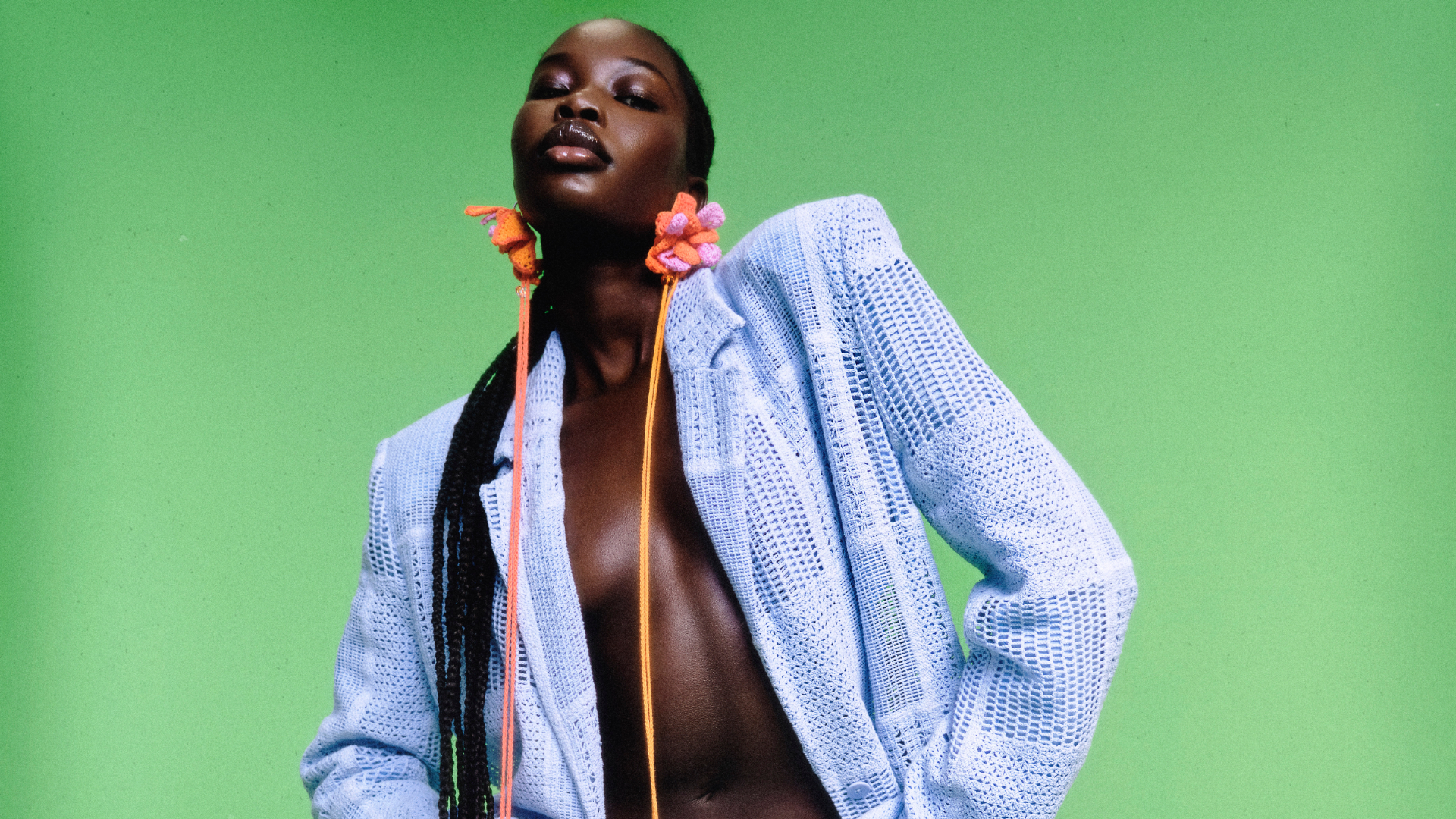
The Roberta Einer woman is Kylie Jenner. She's Megan Fox and Jorja Smith. She wears sweater dresses with rib-revealing cut-outs and flirty crochet mini skirts that are far from the granny squares you're used to. Her style oozes unapologetic sex appeal. But she's also you—whoever that might be.
As Einer tells Marie Claire over Zoom, if you're open to experimentation and have a genuine interest in fashion, then you're part of the club. "Our brand is for a range of different women: From Swedish girls to Atlanta girls, to those who go on holiday in the French Riviera or who party in Miami," the University of Westminster and Central Saint Martins graduate says with a smile. "It's for strong women who, when you look at them in our clothing—which has a lot of character— it doesn't feel like it's wearing them. They're wearing the clothing, and you can tell they're empowered. All of that, as a mix, is the perfect type of Roberta Einer girl."
The London-based label is six-years-old but only really started to assemble its eclectic, diverse crowd of supporters in 2020, during the dark days of the pandemic when all you could do was doomscroll on your phone. "Through social media, we created a community of people who dreamt of a better life after COVID," shares the Estonian designer.
In short, Einer, who cut her teeth at legacy houses like Balmain and Alexander McQueen, has mastered the concept of Instagram dressing. You've definitely seen her signature Bianca gown, a backless, asymmetrical knit number laced with sheer panels throughout, on your feed. But more than just statement dresses you slip on for photo ops, her work carries a more significant and intentional theme.
"For a long time, I've been developing a new idea of sensual womenswear, specifically knitwear, as something that empowers you. Short, see-through and long, open-back dresses, colors and patterns that would otherwise feel kitsch or cheap, or what one would perhaps even think of as anti-feminist—in my head, I see it the opposite way," the 30-year-old creative says. Her provocative knit gowns and crochet tops help women discover their power, which, Einer says, is the heart of her label. "My idea behind [Roberta Einer] is that we're selling a dream—a woman you could be; only then you realize you already are her."
Lily Yeung
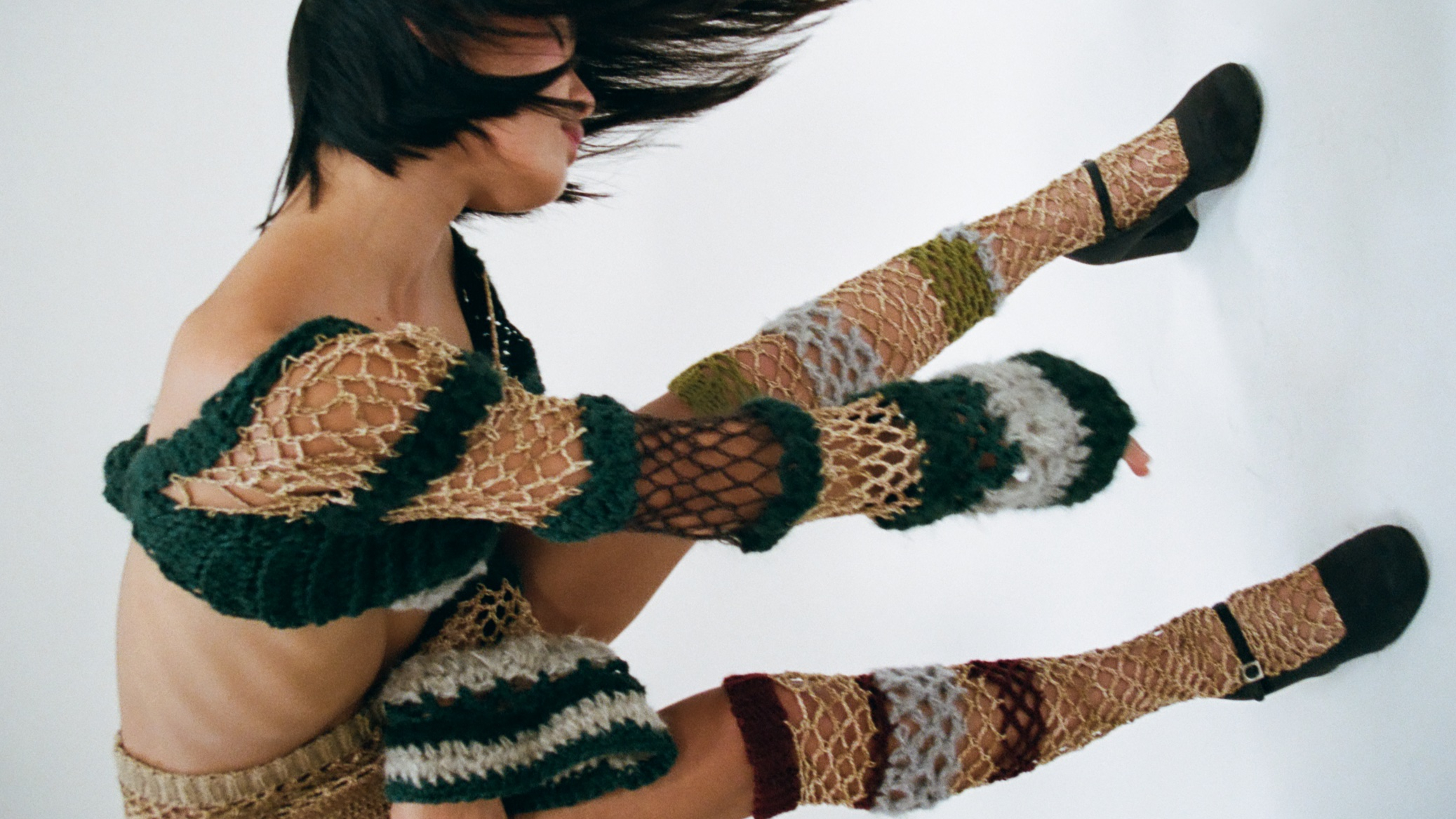
Yarn the color of a verdant forest floor, webbed knitting akin to a spider's web, felted wool resembling a cocoon plucked freshly from a tree branch—perusing Lily Yeung's work, it's evident that nature is a driving theme in her work. "The organic forms and lines realized on walks in nature and memories of interactions with water and earth translate into my work subconsciously," Yeung describes of her self-titled knitwear brand. But beyond just a point of influence, the London and Los Angeles–based designer intimately understands and reveres the natural world.
"Materials can hold so many stories and power," describes Yeung, who is of Navajo and Chinese descent. "They're a way to connect to a place and land, to inspire memory and emotion. So, letting the natural beauty of these materials—like naturally-dyed fibers and Navajo churro wool—influence my designs makes me feel more connected to the land. And," adds Yeung, "I believe these thoughtful choices regarding the materials can open up conversations around sustainability, indigenous histories, and cultural significance surrounding materials."
Intentionality has always been vital for Yeung. The artist grew up immersed in fashion (both of her parents are designers) and, long before launching her self-named label, used textiles and traditional Indigenous craft to connect to her heritage. But it was when she turned to the art of crochet during the pandemic that she thought of focusing her efforts on a fully-fledged knitwear brand. "I was working through a lot of my emotions and feelings through fiber, creating garments that held me and made me feel protected," she explains her motivations for officially launching Lily Yeung in 2021.
Yeung has maintained her brand's seminal, emotional core with each collection. "That element of touch and physicality of knitwear is personal, especially in crochet where every stitch is done one by one and by hand," the self-taught knitter offers. "The imperfections and subtle expressions left behind in the textiles give a soulfulness to a garment that makes it feel human—and people connect to that. Something that feels genuine and one-of-a-kind stands outs in an oversaturated fashion climate."
Aisling Camps
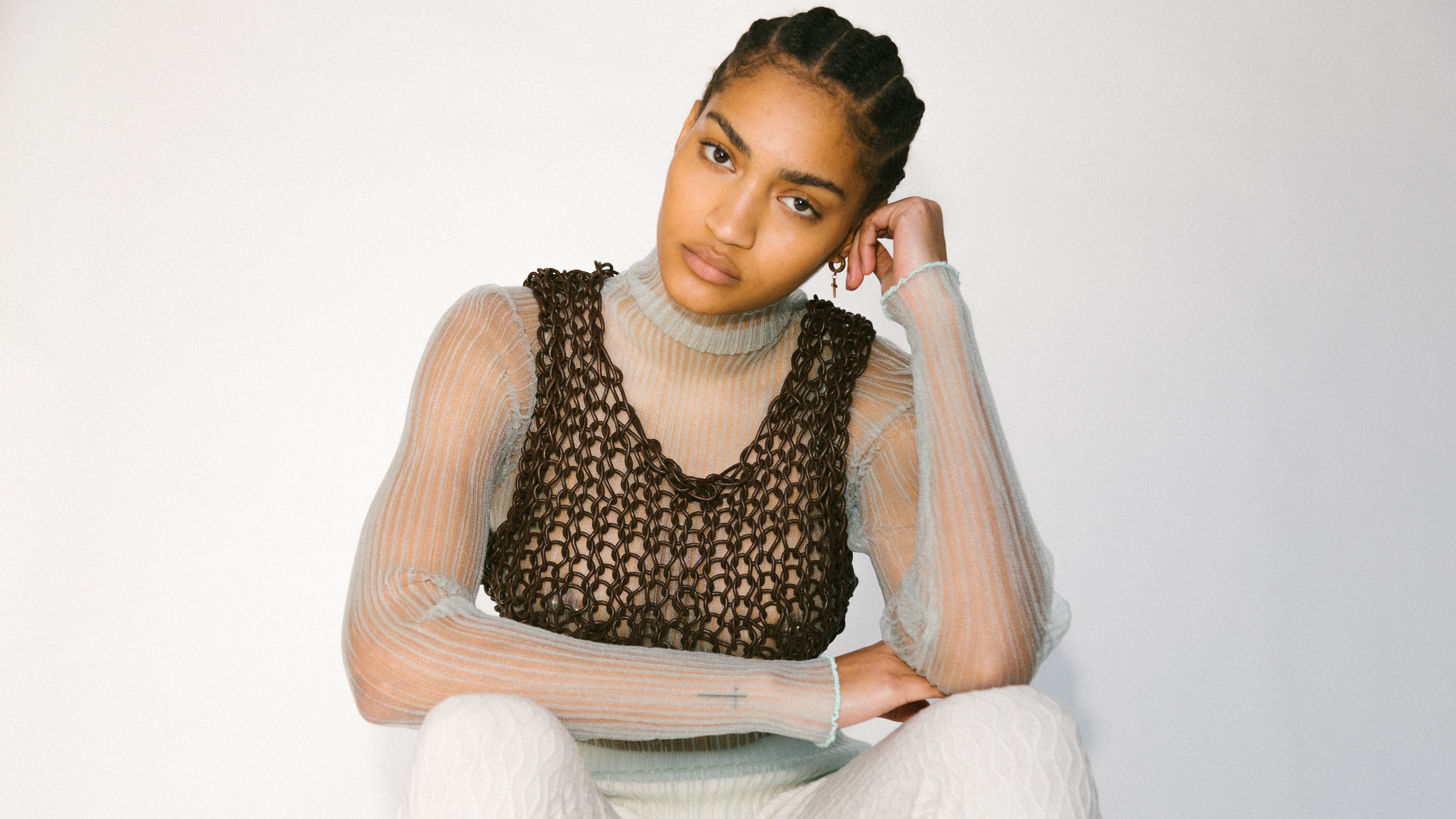
Life, as you know, doesn't always go according to plan. 'We plan, and God laughs,' goes the old adage. Aisling Camps, founder of the eponymous knitwear brand, is intimately familiar with the sentiment. In 2013, after a tenacious, years-long effort of trying to break into the fashion industry, Camps had no choice but to leave New York City and return home to Trinidad. Even with two degrees under her belt—one in mechanical engineering from Columbia University and a Bachelor of Arts in Fashion Design from the Fashion Institute of Technology—the artist couldn't secure a visa sponsorship to authorize her stay in the United States.
"I had all these big plans, but circumstances told me I needed to make a detour," she describes. And yet, despite the disruptive wrench that life rudely threw into her plans, Camps remains grateful for the situation. "It showed me that I am not in control and forced me to be okay with that. I also was reintroduced to my country and culture as an adult and was able to see the beauty of Trinidad in a totally new way," she shares.
But what does a knitwear designer make for the Caribbean climate? "Logically, we're not wearing wool sweaters in the tropics, so I was faced with a unique opportunity," she explains. "I had this skill set specializing in knitwear and new clientele that needed clothing for hot, humid weather. Also, we're not a conservative bunch in the Caribbean—[my work] needed to have a bit of sex appeal." A design point-of-view that focuses on scandalous knits with cut-outs and loosely-woven macrame designed to flash skin began to take shape.
However, shortly after launching her namesake knitwear label with a finely-honed Trinidadian influence, Camps won the green card lottery in 2014 and, ironically, headed back to NYC. But her time in the Big Apple proved advantageous the second time around. Celebrities like Cardi B, Gabrielle Union, and Tracee Ellis Ross began noticing her sensual sweater offerings. And after a 2018 collaboration with the Kerby Jean-Raymond-helmed Pyer Moss, Aisling Camps officially reached industry "It" status.
"Knitwear has such a rich history, but most of it is of European origin, and traditional knitwear designers tend to stick to classic shapes and stitch designs, but that never appealed to me much," Camps tells Marie Claire. Even still, now based out of a studio in Dumbo, Brooklyn, where she makes most of the brand's crochet and macrame pieces by hand, Trinidad remains top of mind. "Why create work that's been done many times before, especially when I don't have any cultural connection to it? There's no excitement in that for me. I [want] to try something different without all these constraints of how you're supposed to knit a sweater."
Nadia Wire
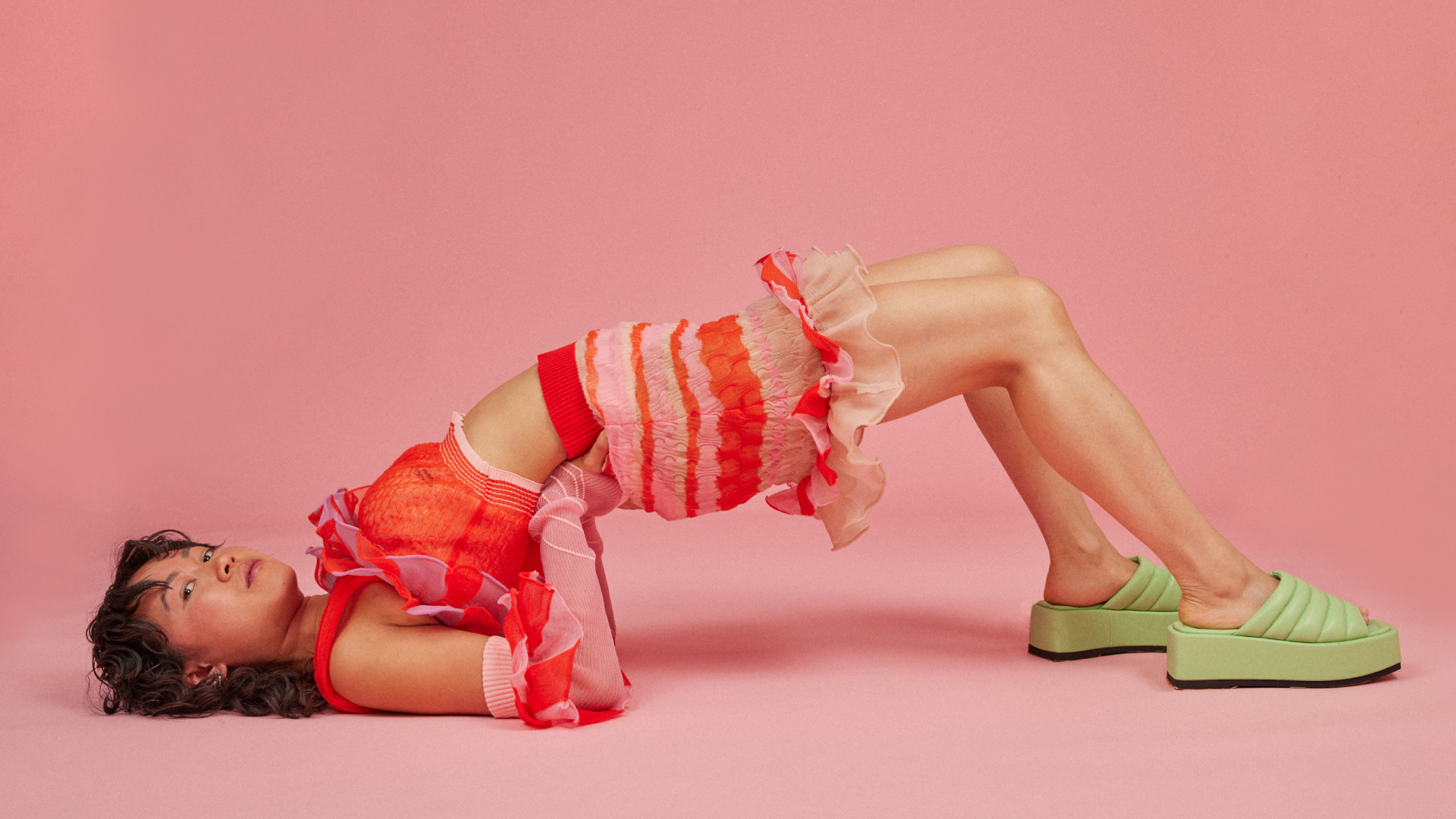
Ambitious feels too small of a word to describe Copenhagen-based designer Nadia Wire. The Central Saint Martins graduate, whose resume boasts big-league names like Iris Van Herpen, Peter Pilotto, and Stine Goya, was always destined to be an iconoclast. "I have always known I wanted to be a fashion designer," she begins her chat with Marie Claire.
"I wanted to establish a brand where the manufacturing was incorporated into the brand's existence so that I could work closely with the production," explains the Danish designer. Her solution, naturally, was to do it all herself from scratch. "In 2020, I set up my own knitting factory and established a team and production site before launching my brand. It was important to me that all aspects of the company worked together under just one roof," the founder says. Her brand's clothing—think graphic sweater vests, transparent ribbed dresses, and 3D-knit jacquard trousers—is all made-to-order in the Denmark-based factory.
Wire explains that this thoughtful production process helps cut down waste, as eco-consciousness is a foremost tenet of her eponymous label. "However, when you work in the fashion industry, I don't think it's possible to claim that you manufacture sustainable collections," she states. Just the sheer fact of adding more inventory into an already overwhelmed and over-produced system, she argues, is anti-sustainable. Even still, the designer tries to minimize her brand's impact.
"I always look through my archive of textiles for inspiration when designing a new collection. Everything is based on something that already exists, and I don't allow anyone to throw away any scraps because nothing is waste," Wire explains. "We also code and program all our fabrics directly to the knitting machine, which means every product comes out of the machine fully-fashioned"—or, in layman's terms, without excess material.
Considering her brand is only two years old (in toddler years, it's only just now starting to string longer sentences together and understand the concept of individuality), it's remarkable how much Wire has accomplished. But she's still not satisfied. The knitwear maverick has big hopes to expand her production facility and continue her closed-loop manufacturing. But beyond that, she says the future's not hers to know.
"I am on a constant knitting adventure that will continue to evolve in directions I cannot predict! I want to honor and pay tribute to knitwear, but I also want to challenge it. Knitwear is a spacious notion and an adventure that can be explored further than what already exists. If we don't have fun when dealing with fashion, then what is left?".
Zankov

In the colorful and kaleidoscopic world of Zankov, minimalism doesn't really exist. Geometric prints that purposefully play a trick on your eye and five-shades-at-a-time color blocking reign supreme under founder Henry Zankov's purview. The closest you'll come to a neutral is the knitwear label's take on argyle: A distorted, clown-ish diamond jacquard pattern in camel and off-white with pops of black.
"I feel color has the power to transform, and print can be its playground," gushes the designer, who first got a taste for knitwear design when working at labels like Donna Karan, Diane von Furstenberg, and Edun. "By injecting natural fibers and yarns with a strong use of color and pattern, I want to establish a kind of visual language [with Zankov] that has longevity and obvious recognition. And this, to me, can become timeless—something you always go back to as a foundation and then build upon that."
Launched in 2019, Zankov has solidly established its perspective as a ready-to-wear brand that cherishes whimsy and, as expected from any luxury knitwear label, quality craftsmanship. "I prefer to work with smaller producers who are still family owned and run." The St. Petersburg-born designer describes the Alpaca Mill in Prato, Italy, their hand knitter based in Brooklyn, and the women's cooperative located in the Lot region in France—who raise special heritage wool that we used in our Fall/Winter 20222 handknits," Zankov details.
The FIT graduate has also become somewhat of a poster child for fashion's recent dopamine-dressing phenomenon. Look to his eclectic multi-colored polo shirts, chunky-comfy cardigans, and Piet Mondrian-esque tubular dresses, all of which inspire a sense of hopeful optimism.
"As cliche as it sounds, fashion has the power to influence how we feel by being a mirror of who we are or strive to be," says the Russian-American designer. "So when I feel excited or happy about a color or a silhouette, to me, that means I have to make it so that others can feel that [happiness] as well."
Slowly but surely, one vibrantly in-your-face turtleneck at a time, Zankov is creating a capsule wardrobe for maximalists to invest in. "What I love about knitwear is that it is such a timeless, hand-touched textile that naturally feels precious, like an heirloom," he details on his investment wares. "Creating something from a little thread of yarn is an exciting journey, as the technical and visual possibilities are endless."
Get exclusive access to fashion and beauty trends, hot-off-the-press celebrity news, and more.

Emma Childs is the fashion features editor at Marie Claire, where she explores the intersection of style and human interest storytelling. She covers viral, zeitgeist-y moments—like TikTok's "Olsen Tuck" and Substack's "Shirt Sandwiches"—and has written hundreds of runway-researched trend reports. Above all, Emma enjoys connecting with real people about style, from picking a designer's brain to speaking with athlete stylists, politicians, and C-suite executives.
Emma previously wrote for The Zoe Report, Editorialist, Elite Daily, and Bustle and studied Fashion Studies and New Media at Fordham University Lincoln Center. When Emma isn't writing about niche fashion discourse on the internet, you'll find her stalking eBay for designer vintage, doing hot yoga, and "psspsspssp"-ing at bodega cats.


